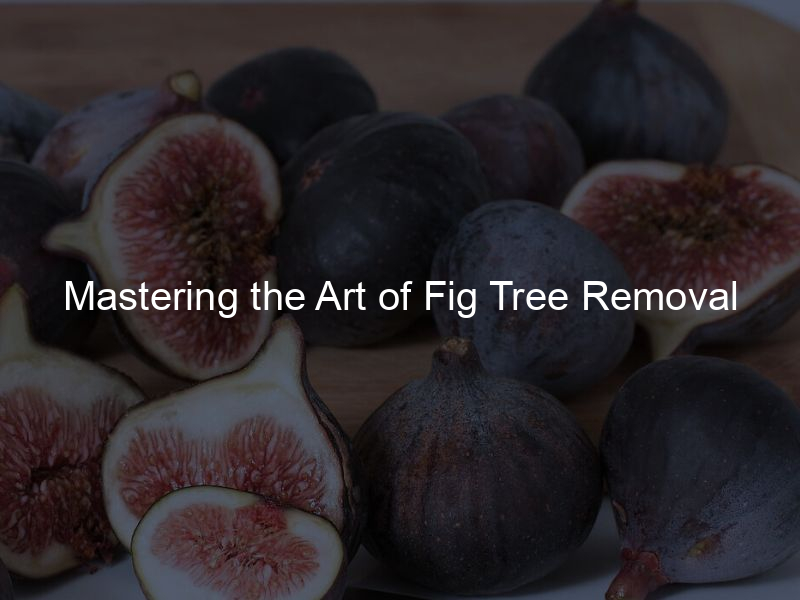Water is a vital component for the health and growth of fig trees. It plays a crucial role in facilitating various physiological processes necessary for their survival and overall well-being. Proper hydration ensures the optimal functioning of cells, nutrient uptake, photosynthesis, and transportation of essential compounds throughout the tree.
Fig trees require water to maintain turgidity in their leaves, stems, and fruits. An adequate water supply promotes healthy leaf development, ensuring efficient photosynthesis, which is vital for the production of sugars and energy. This, in turn, supports the growth and vigor of the tree.
Water is also essential for the development and quality of fig fruits. Sufficient moisture during the fruiting stage is crucial for proper fruit expansion, juiciness, and flavor. Insufficient water availability can lead to smaller, shriveled fruits with compromised taste and texture.
The factors affecting the water requirements of fig trees
Several factors influence the water requirements of fig trees, and understanding these factors is key to providing appropriate irrigation:
1. Climate and environmental conditions: Fig trees have varying water needs based on the climate they are grown in. Hot and arid regions typically require more frequent watering, while cooler and more humid areas may require less. Factors such as temperature, humidity, and rainfall patterns significantly impact water requirements.
2. Tree age and growth stage: The water needs of fig trees change as they grow and mature. Young trees and actively growing ones have higher water demands compared to older, established trees. Additionally, during the fruiting stage, fig trees require adequate water to support fruit development and prevent fruit drop.
3. Soil type and moisture retention: Soil composition and texture influence water availability to fig tree roots. Well-draining soils allow excess water to drain away, preventing waterlogging and root rot. The soil’s moisture-holding capacity is crucial for ensuring a consistent water supply to the tree’s roots.
4. Environmental factors: Factors such as wind exposure, sunlight intensity, and microclimate variations affect the rate of water loss through transpiration. Windy and sunny conditions increase water evaporation from the leaves, necessitating more frequent irrigation to compensate for the loss. Following these guidelines ensures your fig tree gets the hydration it needs to thrive and produce delicious fruit!

How much water does the fig tree need?
The water needs of a fig tree can vary depending on various factors such as climate, soil conditions, tree age, and growth stage. While there is no one-size-fits-all answer to the exact amount of water a fig tree requires, there are general guidelines to help determine adequate watering. Here are some considerations:
1. Young fig trees: Newly planted or young fig trees typically require more frequent watering to establish their root systems. Water deeply and regularly, ensuring the soil around the roots remains consistently moist. Aim for 1-2 inches of water per week during the growing season.
2. Mature fig trees: Established fig trees generally have deeper and more extensive root systems, making them more resilient to drought. However, they still require regular watering, especially during dry periods. Water mature fig trees deeply and infrequently, allowing the soil to dry out slightly between waterings. This encourages the tree to develop deeper roots, promoting its overall health and drought tolerance.
3. Fruit-bearing fig trees: During the fruiting season, fig trees require adequate water to support fruit development and prevent fruit drop. Increase irrigation during this period, ensuring the soil remains evenly moist. Consistent watering during fruit maturation contributes to larger, juicier figs.
Remember that overwatering can be as detrimental to fig trees as underwatering. Avoid waterlogged conditions that can lead to root rot and other issues. Proper drainage and allowing the soil to dry out slightly between waterings are important for the tree’s health.
How do I know if my fig plant needs water?
If your fig tree looks a bit droopy, it could be a sign that it needs more water. To test if the soil is dry enough to need watering, stick your finger in the ground about two inches down; if it feels dry, then it’s time for a drink! Other signs of dehydration include discolored or wilting leaves and reduced fruit production.
So, now that you know the basics of how much water does fig tree need, you can be sure to give your fig tree the best care possible. With regular soil hydration and mulching around its base, it will produce healthy fruits for many years to come!
How long can a fig plant go without water?
Fig plants can go a few days without water, but keeping the soil consistently moist is best. If your fig tree does not receive enough water for an extended period of time, its leaves will start to droop, and the plant may even die. Therefore, it’s important to stick with a regular watering schedule to ensure that your fig tree receives the hydration it needs!
Can figs be overwatered?
Yes, it is possible to overwater your fig tree. But, if the soil is constantly saturated with water, its roots can start to rot, and the plant will struggle to get oxygen. This can result in wilting leaves or even the death of the fig tree. To avoid this problem, use a well-draining potting mix and make sure that you allow the top layer of soil to dry out between waterings.
Signs of Underwatering
Wilting: The leaves of an underwatered fig tree may appear droopy, limp, or wilted. This is a common sign of water stress, and the leaves may not regain their turgidity even after watering.
Dry and Cracked Soil: Underwatered fig trees may have dry soil that appears cracked or pulls away from the edges of the pot or planting hole. The soil may also feel dry to the touch.
Leaf Yellowing and Browning: Leaves may start turning yellow or brown, starting from the edges and progressing towards the center. This is a sign of dehydration and a lack of sufficient water uptake.
Leaf Drop: In an effort to conserve water, an underwatered fig tree may shed its leaves prematurely. This is a survival mechanism to reduce transpiration and water loss.

Signs of Overwatering
Wilting or Yellowing Leaves: Paradoxically, overwatering can also cause wilting or yellowing of the leaves. However, the leaves may appear soft and limp instead of dry and crispy.
Fungus or Mold Growth: Excessive moisture in the soil creates a favorable environment for fungal diseases. Look for signs of mold, fungus, or algae growth on the soil surface or around the base of the tree.
Root Rot: Overwatering can lead to root rot, which is characterized by a foul smell, mushy roots, and a dark or discolored appearance. Root rot can impair the tree’s ability to absorb water and nutrients.
Stunted Growth: If a fig tree is consistently overwatered, it may exhibit slow or stunted growth. Excessive moisture can hinder root development and nutrient uptake, leading to diminished overall health.
Soil Sogginess: Overwatered soil will remain consistently wet, and the excess water may not drain properly. The soil may become compacted, waterlogged, and have a heavy, muddy consistency.
It’s important to note that these signs may also be indicative of other issues, so it’s essential to consider them in conjunction with other factors such as soil conditions, temperature, and overall tree health.
Which is better dry soil or moist soil?
A drier soil is better. this can result in better-tasting figs and a higher shelf life due to several factors:
Concentrated Flavors: When fig trees experience slightly drier soil conditions, the stress prompts the trees to concentrate sugars and flavor compounds in the fruits. This concentration of flavors leads to a more intense and enjoyable taste in the figs. The sugars become more concentrated, enhancing the sweetness and richness of the fruit.
Extended Shelf Life: Figs grown in slightly drier soil tend to have a longer shelf life compared to those grown in excessively moist conditions. The reduced water content in the fruits helps inhibit microbial growth and delays the onset of spoilage. This enables the figs to maintain their quality and freshness for a longer period, improving their marketability and consumer satisfaction.
Improved Fruit Ripening: Drier soil conditions can influence the ripening process of figs. When the soil is slightly drier, the figs may ripen more slowly and evenly, allowing for better flavor development and a more desirable texture. This controlled ripening process contributes to a more enjoyable eating experience.
It’s important to note that while slightly drier soil can enhance the taste and shelf life of figs, extreme drought stress can have negative effects on the tree’s overall health and fruit production. Finding the right balance in soil moisture is crucial, as excessive water stress can lead to reduced fruit size, poor yield, and increased susceptibility to diseases and pests.
Do figs like hot weather?
Yes, fig trees generally do well in hot and sunny environments. When the temperature rises, however, it’s important to adjust your watering schedule accordingly. Hotter temperatures mean that plants will lose more water through evaporation, so you may need to increase the frequency of your watering sessions. Additionally, mulching around the base of your fig tree can help keep moisture locked into the soil for longer periods!
Can figs get too much sun?
Yes, figs can get too much sun. If your tree gets more than eight hours of direct sunlight each day, it may suffer from heat and dehydration. It would be best if you were sure to provide shade during the hottest parts of the day by using a canopy or cloth cover. Additionally, make sure that you increase the watering frequency so that your fig tree stays well hydrated.
Water Conservation Practices
Water conservation is essential for sustainable fig tree cultivation. By implementing water-saving practices, fig tree growers can minimize water waste, reduce environmental impact, and promote long-term water sustainability. Here are some water conservation and sustainable techniques that can be employed:
Mulching: Applying a layer of organic mulch around the base of fig trees helps retain soil moisture by reducing evaporation. Mulch acts as a protective barrier, insulating the soil and reducing water loss. It also helps control weed growth, preventing competition for water resources.
Rainwater harvesting: Collecting and storing rainwater for irrigation is an effective way to reduce reliance on freshwater sources. Install rain barrels or cisterns to capture rainwater from rooftops, and use it to water fig trees during dry periods. This practice not only conserves water but also reduces the strain on municipal water supplies.
Smart irrigation systems: Upgrade to smart irrigation systems that use sensors and weather data to optimize watering schedules. These systems adjust irrigation based on real-time soil moisture levels and weather conditions, ensuring that fig trees receive the right amount of water when they need it. Smart systems help prevent overwatering and minimize water waste.
Drip irrigation: Switching to drip irrigation can significantly reduce water usage by delivering water directly to the root zone of fig trees. Drip systems provide slow, targeted water delivery, minimizing evaporation and ensuring efficient water utilization. This method also helps reduce weed growth and prevents water runoff.
Water-efficient practices: Adopt water-efficient techniques such as adjusting watering schedules based on weather patterns, avoiding watering during windy conditions, and watering in the early morning or late afternoon to minimize evaporation.
Proper maintenance and monitoring: Regularly inspect and maintain irrigation systems to ensure they are functioning optimally and not wasting water. Monitor soil moisture levels, observe the tree’s water requirements, and adjust watering practices accordingly.
By implementing these water conservation practices and sustainable techniques, fig tree growers can minimize water waste, conserve this precious resource, and contribute to a more sustainable and environmentally friendly approach to fig tree cultivation.
Fig trees are a great addition to any garden, but it’s important to make sure they get the right amount of water. When watering your fig tree, follow the five rules of thumb: deeply and regularly water around the base; adjust frequency based on temperature; mulch around the base to help conserve water; irrigate during rainfall deficiencies; and avoid overwatering. Additionally, look out for signs that your tree needs more hydration, such as droopy leaves or wilting fruit production. With regular soil hydration and mulching around its base, you can ensure that your fig tree stays healthy and produces delicious fruits for many years to come!









